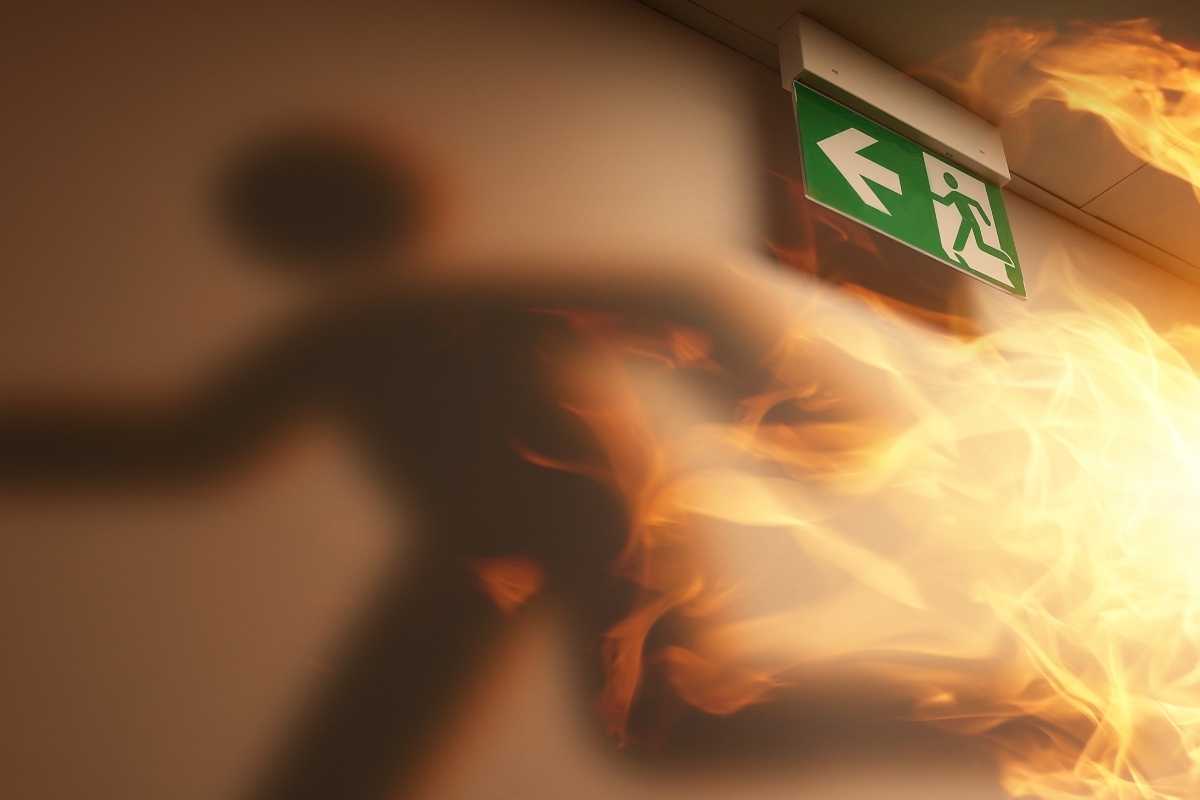In a modern house fire, there are numerous synthetics (especially plastics) that would burn and when they burn produce a deadly smoke cocktail that has contributed to hundreds of deaths each year and is responsible for a wide variety of cancers.
Plastic in the Home
Some of the products in your home that contain plastics are:
- Carpet
- Clothes
- Televisions
- Toilets
- Flooring
- Insulation
- Household containers
- Hair Dryers
- Computers
- Food Packaging
- Aerosol Containers
- Furniture
Plastics have the capacity to produce smoke quantities 500 times greater than burning a similar amount of timber would and it is this smoke we need to be concerned about.
Gases Produced When Plastic Burns
Among the gases produced when plastics decompose due to heat exposure or burning is:
- Hydrogen Cyanide
- Carbon Monoxide
- Carbon Dioxide
- Formaldehyde
- Ammonia
- Benzene
- Hydrogen Chloride
Being in a burning house, or attempting to escape one, you will be breathing in the above gases and more…with devastating long and short-term effects.
One of the biggest concerns is the abundant presence of PVC in the modern home and the carcinogens produced when it burns. These gases are responsible for several cancers, including leukaemia, laryngeal cancer and colon cancer among others. PVC also produces highly acidic hydrogen chloride, which can have an impact on respiratory and circulatory health.
Toxins from burning plastics in the blood
In several studies conducted in the United States, blood samples were taken from both survivors and fatalities of house fires and the results are disturbing:
- Elevated cyanide levels were found in victims of smoke inhalation.
- The combination of cyanide and carbon monoxide enhanced the toxic effects of each chemical .
- Cyanide poisoning may have caused more deaths than carbon monoxide.
- Higher cyanide levels increase the probability of death.
Rethinking the “Getting Down Low”…
Advocates of the “Get down low” approach to escaping house fires might want to think of a better plan…
As temperatures increase in the initial stages of house fires, plastic products in the home give off large quantities of the gases discussed previously. This occurs long before the plastics actually begin to burn.
Fact: Many plastics start to decompose (and give off gases) at half their ignition temperature!
For plastics, often the gases emitted during this early stage (before they ignite) are far more toxic than those emitted when they are actually burning.
The carpet in your home is one of the largest sources of hydrogen cyanide gas…when you “Get down low…” your breathing space is close to the carpet which is potentially giving off large quantities of hydrogen cyanide gas (especially when hot smoke or flame is overhead).
Evidence shows that fire victims are often incapacitated by the highly toxic and irritating products of decomposing plastics long before carbon monoxide levels in the blood become fatal and before the fire comes in contact with the flesh.
In some instances, the narcotic effect of hydrogen cyanide has also caused smoke inhalation victims to resist rescue and even fight with firefighters who are there to help them escape.
Conclusion
Critically, to avoid becoming victim to the toxic gases in modern house fires:
- Install and maintain smoke alarms – to give you time to escape.
- Have fire extinguishers in the home – to allow you to extinguish fires if they start.
- Have a fire escape plan – that every member of the family knows
If you would like to know more or would like our assistance in the areas mentioned check us out at www.intrinsicsafety.com.au. Alternately, call us on 1300 990 336 or email us at [email protected]



